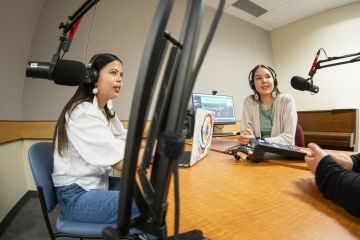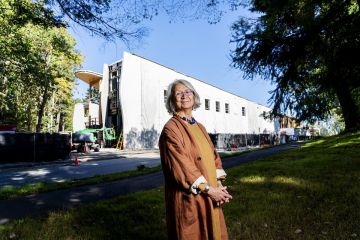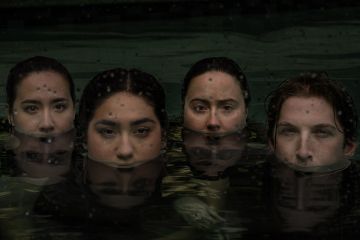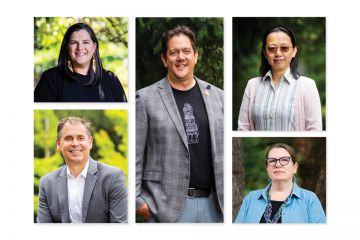UVic, First Nations journey together to return ancestral remains
In a solemn ceremony last Friday, members of the Esquimalt and Songhees Nations and the University of Victoria journeyed together to return ancestral remains that had been stored in the Department of Anthropology to their community of origin on Lekwungen traditional lands.
Twenty-three pallbearers each carried a small cedar box with blanketed remains from the Cornett Building to a waiting vehicle. A police escort led a convoy of vehicles to the Esquimalt First Nations cemetery where the ancestral remains were interred. A traditional ceremony followed at the Esquimalt Long House.
UVic has been working with First Nations communities on Vancouver Island over several months to return ancestral remains that have been stored in the department from decades past. Other universities and museums also have repatriated ancestral remains and artifacts in recent years.
"We knew from the outset that we wanted to undertake this process carefully and respectfully and with the advice of First Nations," said Ann Stahl, chair of the Department of Anthropology.
The department, in keeping with contemporary perspectives in the study of humans and their societies, wanted to transfer the remains to their First Nations communities of origin or work with those communities to make other arrangements for their long-term care. In a ceremony in May, First Nations elders blanketed the remains kept in a private, secure area at UVic.
The remains come from 21 sites around Vancouver Island, mostly removed under provincial permits to save them from damage and destruction at construction sites or places threatened by erosion. None of the remains were unearthed for research purposes or used for research. Several First Nations bands visited UVic over the summer to bring the remains home to their communities. Others have asked UVic to continue its stewardship in the short term while arrangements can be made.
It was through discussions with representatives from several Vancouver Island First Nations that the department wanted to ascertain what ancestral remains might be included among other materials collected from archaeological sites across Vancouver Island. A careful inventory was done which indicated the ancestral remains came to UVic in a variety of ways.
Most of the remains were removed under permits issued by the BC Archeology Branch in the 1960s and 1970s from Vancouver Island construction sites and places threatened by erosion so that the remains would not be damaged or destroyed. A member of the department at the time was contacted to excavate the remains, which were brought to UVic where they were stored.
In other cases, a temporary instructor in the department worked under contract for various provincial agencies, recovering ancestral remains threatened by erosion or development. Also, fragments were found among faunal, or animal, collections.
The remains came from five main areas around Vancouver Island—Courtenay/Comox; Qualicum; Buckley Bay/Tsable River (Fanny Bay) and Deep Bay Spit; Oak Bay, and the Gulf Islands.
Most of the sites had a small number of bone fragments. The largest number of remains, eight individual burials, came from a site affected by expansion of a ferry terminal mid-island in the early 1970s.
The consultation plan on how to respectfully proceed with repatriation was considered by people within the department with relevant knowledge and experience as well as Robina Thomas, UVic's director of Indigenous Academic and Community Engagement; Ruth Young, director of the Office of Indigenous Affairs; and Lekwungen elders from the Esquimalt and Songhees nations. Stahl, Thomas and Young then travelled to the different individual First Nations communities to inform them in person about the ancestral remains and respectfully invite their advice about how they want to proceed.
Those from UVic attending Friday's interment and cultural ceremonies in addition to Stahl, Thomas and Young were Vice-President Academic and Provost Valerie Kuehne, Associate Vice-President Academic Planning Nancy Wright, Dean of Social Sciences Catherine Krull, and Associate Dean of Social Sciences Rosaline Canessa.
UVic will continue to work with the First Nations communities to respectfully return all the ancestral remains to their communities of origin.
In this story
Keywords: indigenous, anthropology




